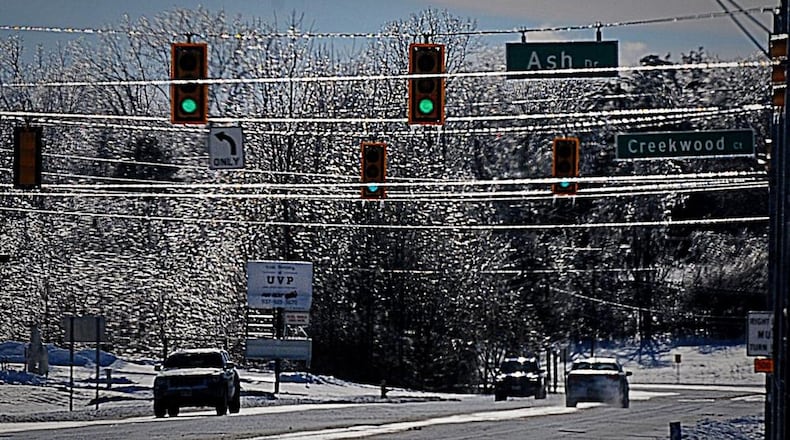Satellite imagery was showing the development of a low-pressure system out in the Pacific Ocean. Our computer models were taking buoy data along with the information coming from our satellites and past similar storm tracks to create potential forecast solutions. I knew this was going to be a challenging forecast and the hype had begun along with the pressure to deliver.
>>FORECAST: Frigid temperatures, below zero wind chills remain; Advisory in effect
It wasn’t until Thursday when this storm actually made landfall and more data was supplied by weather balloons and sensors to help the forecast models with showing potential tracks, timing, and precipitation type. I knew it would take about 12 to 24 hours for the models to regulate. This, of course, would put us into Friday, the day before the event, way too late to give the public information they may need to prepare.
Thursday evening was the first time I gave a forecast for snow totals. In the back of my mind, I know this is going to change, but I hope to be as transparent as possible about any shift in the track that could dramatically alter the outcome. Between then and what actually happened can only be described as a roller coaster. Up and down the snow totals would go.
>>RELATED: Snow emergencies issued throughout the area: What do they mean?
This storm also had a few more, in my opinion, impactful threats that included winds, bitter chills, and a flash freeze. My worry was the focus would remain on snow totals and not the other hazardous conditions created by this storm. The outcome proved to be less snow, yes, but the winds, flash freeze, and bitter chills would still occur. While I did my best to portray these impacts and the potential storm track shift, there was still a feeling of disappointment when the storm did shift north and snow totals would be lower than predicted.
My mind then travels to the psychology and sociology that is tied to winter storms. Why after a tornado warning are we filled with relief that a tornado did not strike, but we feel upset if we don’t get as much snow as expected? What is it about snow that gets us all stressed and panicked? Is it the build-up to the event that has our expectations higher? Even as a meteorologist I’m not devoid of these feelings. In fact, I don’t know one meteorologist who doesn’t care more than a viewer when a forecast doesn’t go as planned.
These are the thoughts running through my mind, but in the end, all I think is why I became a meteorologist. It’s not just about the science, it’s about using this knowledge to keep you safe. I’ll be here through the ups and downs and I hope you’ll join me for the ride.
About the Author
